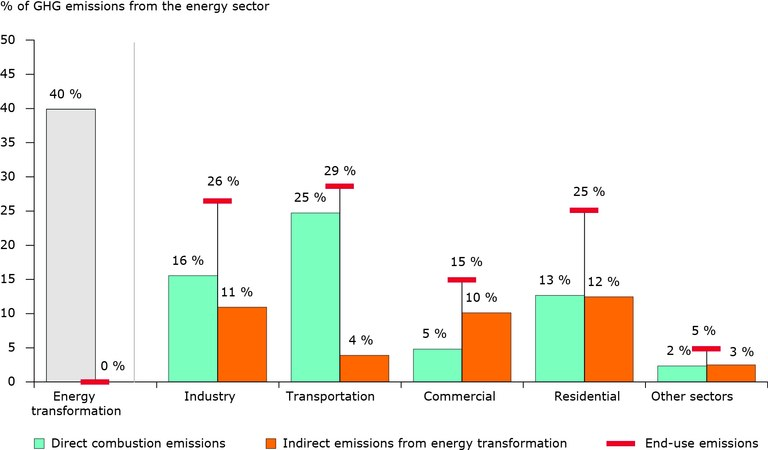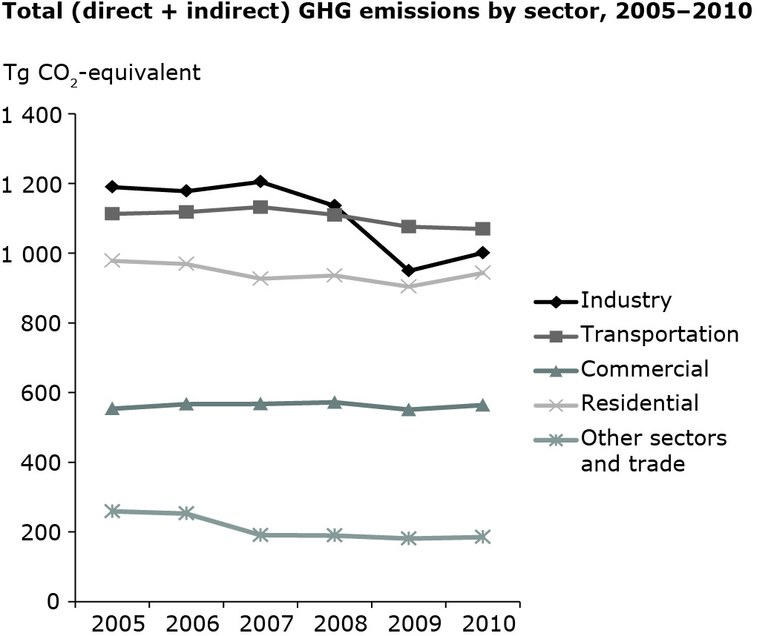Households and industry responsible for half of EU greenhouse gas emissions from fossil fuels

Households and industry in the EU each cause approximately a quarter of energy-related greenhouse gas emissions, according to a new report by the European Environment Agency (EEA). The two sectors were largely responsible for the emissions increase in 2010, together leading to an additional 90 million tonnes of CO2 equivalent compared to 2009.
The report considers the 40 % of greenhouse emissions originating from energy industries such as heating plants, power stations and refineries. These emissions are then reallocated to the ‘end-users’ of the energy. The main objective is to help improve the understanding of the demand leading to greenhouse gas emissions.
Between 2009 and 2010 fossil fuel combustion was responsible for an increase of over 100 million tonnes of CO2 equivalent in the EU, partly due to an economic rebound in many EU Member States. This is reflected in the new EEA analysis. In 2010, approximately 50% of the net increase in energy-related emissions was driven by higher industrial activity, particularly in the iron and steel sector.
Another reason for the emissions increase in 2010 was a colder winter, resulting in an increase in a demand for heating. The residential sector represented almost 40% of the net increase in energy-related greenhouse gas emissions. In addition, households used more electricity in 2010 compared to 2009, leading to higher emissions.

End-use greenhouse gas emissions from energy use in EU‑27 in 2010

Trends in greenhouse gas emissions by end-use sector in EU-27, 2005-2010
Additional findings
- In the commercial and residential sectors, indirect emissions are higher than the direct combustion emissions attributed to these sectors. This is largely because of electricity supplied by thermal power stations and district heating (from centralised heating plants) in some areas.
- In transport, most emissions are emitted directly from the vehicle exhaust pipe, so there is a relatively small change when the indirect emissions are taken into account. Beside the emissions from petroleum refining, other indirect emissions in the transport sector come from power plants which generate electricity used by electric trains.
- ‘Other sectors’ include the indirect emissions from imports and exports of energy between countries, for example in the electricity trade. In some EU Member States there is a larger effect than in others, highlighting the relative importance of trade in energy for these countries. These effects can also vary significantly from year to year.
- The 2012 report includes for the first time information on indirect emissions of two air pollutants, nitrogen oxides (NOx) and sulphur oxides (SOx) distributed to the end-user sectors. It also provides new diagrams for 27 Member States, Norway and Switzerland.
Source : European Environment Agency (EEA)
________________________
Extra info :
End-user GHG emissions from energy
Reallocation of emissions from energy industries to end users 2005–2010
- Summary [616.3 kB]
- Full report [7.2 MB]

